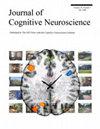Neuroethics, Covert Consciousness, and Disability Rights: What Happens When Artificial Intelligence Meets Cognitive Motor Dissociation?
IF 3.1
3区 医学
Q2 NEUROSCIENCES
引用次数: 0
Abstract
In this article, we consider the intersection of cognitive motor dissociation (CMD) and artificial intelligence (AI), hence when CMD meets AI. In covert consciousness, there is a discordance between the observed behavior, the traditional bedside mode of assessment, and the response to volitional commands as depicted by neuroimaging or EEG studies. This alphabet soup of acronyms represents both the promise and peril of nascent technology in covert consciousness. On the diagnostic side, there is the complexity and uncertainty of identifying the discordance between cognitive activity and overt behavior. On the therapeutic side, when AI is used to generate speech, there is the possibility of misrepresenting the thoughts and intentions of those who are otherwise voiceless. This concordance of factors makes the application of AI to CMD worthy of deeper consideration. We offer this analysis in the spirit of anticipatory governance, a prudential process by which one plans to prevent or mitigate unintended consequences of novel technology. We first consider the normative challenges posed by CMD for clinical practice, neuroethics, and the law. We then explore the history of covert consciousness and the relationship of severe brain injury to the right-to-die movement, before introducing three biographies of brain injury that highlight the potential impact of disability bias or ableism in clinical practice, assistive technology, and translational research. Subsequently, we explore how AI might give voice to conscious individuals who are unable to communicate and the ethical challenges that this technology must overcome to promote human flourishing drawing upon what Nussbaum and Sen have described as a “capabilities approach” to promote normative reasoning.神经伦理学、隐蔽意识和残疾人权利:当人工智能遇到认知运动分离会发生什么?
在本文中,我们将探讨认知运动解离(CMD)与人工智能(AI)的交叉点,即当认知运动解离与人工智能相遇时。在隐蔽意识中,观察到的行为(传统的床边评估模式)与神经影像学或脑电图研究描述的对意志指令的反应之间存在不一致。这些字母缩略词代表了隐蔽意识领域新兴技术的前景和危险。在诊断方面,识别认知活动与公开行为之间的不协调存在复杂性和不确定性。在治疗方面,当人工智能被用于生成语音时,有可能会误导那些原本没有发言权的人的想法和意图。这些因素的共同作用使得将人工智能应用于慢性阻塞性肺病值得深入思考。我们本着预见性治理的精神进行分析,这是一个审慎的过程,人们通过这个过程来计划预防或减轻新技术带来的意外后果。我们首先考虑了 CMD 对临床实践、神经伦理学和法律提出的规范性挑战。然后,我们探讨了隐蔽意识的历史以及严重脑损伤与 "死亡权 "运动的关系,最后介绍了三部脑损伤传记,这些传记强调了残疾偏见或能力主义在临床实践、辅助技术和转化研究中的潜在影响。随后,我们借鉴努斯鲍姆和森所描述的 "能力方法 "来促进规范性推理,探讨了人工智能如何让无法交流的有意识个体发出声音,以及这项技术为促进人类繁荣而必须克服的伦理挑战。
本文章由计算机程序翻译,如有差异,请以英文原文为准。
求助全文
约1分钟内获得全文
求助全文
来源期刊
CiteScore
5.30
自引率
3.10%
发文量
151
审稿时长
3-8 weeks
期刊介绍:
Journal of Cognitive Neuroscience investigates brain–behavior interaction and promotes lively interchange among the mind sciences.

 求助内容:
求助内容: 应助结果提醒方式:
应助结果提醒方式:


